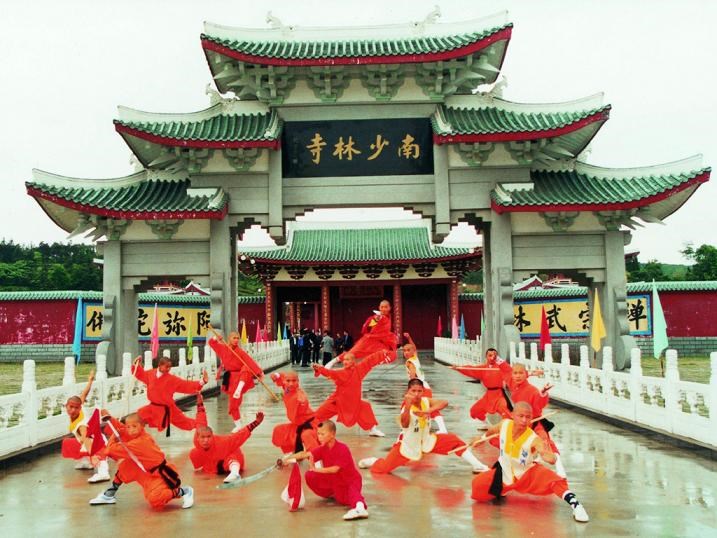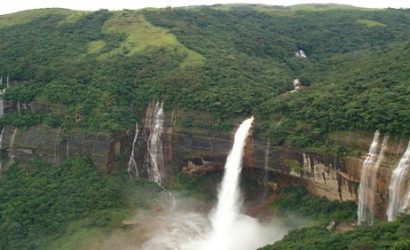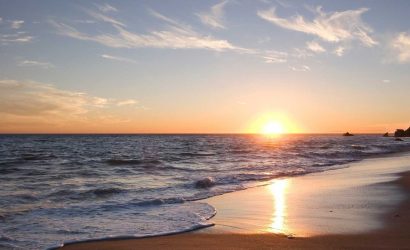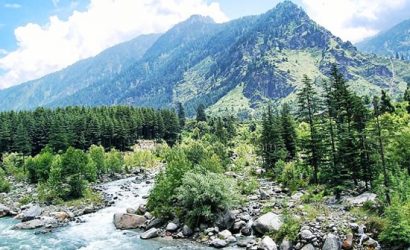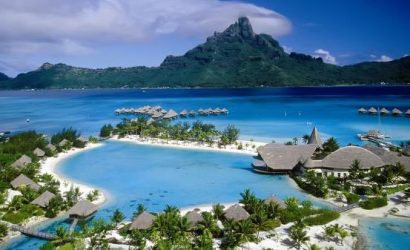Beijing / Luoyang-Shaolin Temple / Xian / Shanghai / Chengdu / Yaan
Price : On Request
Itinerary
Day 1 :
Beijing by Int’l flight
Fly to China, arrive at Beijing Capital Int’l Airport, your expected China tour starts with a warm welcome by an airport representative at the airport. Transfer to the hotel and check-in. Beijing is a city of amazing contrasts - an ancient capital with some incredible historical sites, and a bustling modern metropolis. Moreover, Beijing has successfully hosted the 2008 Olympics. visit the Tiananmen Square and visit the Bird’s Nest (Olympic National Stadium outside) and the Water Cube (Outside), Cultural program: in the evening will watch Acrobatic show.
Indian Dinner
Day 2 :
Beijing
Breakfast at hotel, morning visit the Forbidden City, which the Emperors of the Ming and Qing dynasties governed for over 500 years. Pearl shop,then process to visit the Summer Palace, the largest and best preserved of all the imperial palace gardens. In the afternoon experience Cultural program: the Traditional Beijing Hutong tour, which is also called Rickshaw Tour, Hutong tour, which is also called Rickshaw Tour. visit the Summer Palace, the largest and best preserved of all the imperial palace gardens, and boasts such delights as the “Marble Boat” and the ornately painted” Long Corridor”. Pearl shop. Visit Houhai, is a lake and its surrounding district in central Beijing, one of the three parts of Shichahai. In recent years it has become famous for nightlife because it is home to many popular restaurants, bars, and cafes.The area is especially popular with foreign tourists visiting Beijing, but is also often visited by the expatriate community and younger locals.
Breakfast + Chinese Lunch+ Indian Dinner
Day 3 :
Beijing
Breakfast at hotel, go to the Great Wall-Badaling with Cable Car, a UNESCO World Heritage Site. Then visit to a Jade workshop where we will learn about Chinese jade culture. Afternoon visit Ming Tomb, 50 kilometers northwest from Beijing City lies the Ming Tombs - the general name given to the mausoleums of 13 emperors of the Ming Dynasty (1368 - 1644). The mausoleums have been perfectly preserved, as has the necropolis of each of the many emperors. Because of its long history, palatial and integrated architecture, the site has a high cultural and historic value. The layout and arrangement of all thirteen mausoleums are very similar but vary in size as well as in the complexity of their structures.
Later visit Ya Xiu Market for Shopping at free leisure. Evening watch Kungfu Show.
Breakfast +Chinese Lunch+ Indian Dinner
Day 4 :
Beijing-Luoyang by high speed Train G653 0821/1224
Today early morning check-out, packed breakfast from hotel, transfer to Beijing West Railway station, after 4hours train, reach Luoyang Longmen station, pick up from railway station, transfer to hotel and check-in,lunch at local Chinese restaurant. Afternoon visit the world's cultural heritage - Longmen Grottoes, the grand Longmen Grottoes, built in the Northern Wei Dynasty (386-534), have attracted many domestic and foreign tourists in recent years. Located 12 km away from the city of Luoyang, Henan Province, the grottoes are regarded as one of the most important Buddhist cultural heritage sites. According to related statistics, there are 2,345 caves and niches, 1,000 inscriptions, 28,000 Buddhist images and other cultural relics at the site. Visit Luoyang Old Town District, Luoyang that is a little west of Zhengzhou City was the capital of the Eastern Han Empire (25 AD- 220 AD). After that, it remained an important city in various empires. The Luoyang Old Town District measures a few square miles as the main center, but it probably extends out over twenty square miles. It is the best place to find remaining ancient architecture. An example is a very big city gate that is said to date from 600 AD though it looks much younger. It is a big arched gate that was part of a city wall. The area also features a museum for folk art that contains local art such as paper cuttings art, local clothing, and other local artwork. Some of the streets are shopping streets that sell a certain kind of good or article. Others are residential streets with small shops and old apartments lining both sides. The streets are still generally old and narrow. One special feature of the area is a Muslim community. Many of Luoyang’s Muslims live here. While there, visit a Muslim restaurant, visit, the shops and see the lives of the people on the streets. Dinner at local Chinese restaurant.
Breakfast +Chinese Lunch+ Chinese Dinner
Day 5 :
Luoyang-Dengfeng 1hour drive
Breakfast at hotel, visit Located 12 kilometers east of Luoyang city, the White Horse Temple is one of the oldest Buddhist temples in China and is renowned as the cradle of Chinese Buddhism. This temple, with a large number of Buddhist items housed there, is well worth a visit. The main halls in the White Horse Temple are the Hall of Heavenly Kings, the Great Buddha Hall, the Mahavira Hall, the Ambassador Hall and the Qiyun Pagoda. Not only can travelers appreciate the vivid Buddha statues and solemn architecture, but they can also listen to the historical stories and feel the spiritual world of Buddhism in the White Horse Temple. There are two new temples which have been built in recent years, which are the Indian Temple and the Thailand Temple. The materials of the temples were brought from the two countries. The Indian Temple has been completed while the Thailand Temple is under construction. The styles of these two temples are exotic, each with strong features of India and Thailand. Lunch at Local Chinese restaurant. Afternoon Drive to Shaolin Temple which is about 100 km away. take the bus about 1hour drive to Dengfeng township of Chinese martial arts, visit the Shaolin Temple which Located in the Songshan Mountains, a little more than 50 miles southwest of Zhengzhou, the temple is famous not only as one of China's important Buddhist shrines, but also as the ancient center of Chinese kung-fu. Built in 495, the temple was originally designed to house Batuo, a celebrated Indian monk, who, after many years of spreading Buddhism, was later known as Fo Tuo, or Grand Monk. In 537, another famous Indian monk, Boddhidharma, settled in the temple, and as legend has it, created a sort of primitive bare-hand combat ro That started the kung-fu tradition at the temple. The present buildings at Shaolin Temple are spread out over an area of about 10,000 acres. The most interesting relics are the murals in the Eastern Hall, which depict groups of boxing monks. Here we will visit for 3 hours, also visit the ancient monks buried office-Tallinn, watching exciting cultural program: Shaolin Martial Arts performance. Chinese dinner at local Chinese restaurant.
Breakfast +Chinese Lunch+ Chinese Dinner
Day 6 :
Luoyang/Xi’an G2001 0839/1030
Breakfast at hotel, visit take high speed train to Xian. Xi’an is one of the most ancient cities in China, which was the national capital for over 1,000 years, and the starting point of the Silk Road. Despite a lot of modern development. Xi'an remains a charming city. Upon arrival, transfer to visit the Shaanxi Historical Museum(Monday close). Among the 400,000 items on display are treasures from many of the Dynasties, including some magnificent bronzes and porcelain, many of which have never been on permanent display before. Later lunch at local Indian restaurant, afternoon visit Wild Goose Pogoda Square, You can watch the Bell and Drum tower outside look, a classical building with carved beams and painted rafters, has been served as the symbol of Xi’an.The last stop we arrange today is the Muslim Bazaar of Xi’an, see bell and drum tower outside. The Muslim quarters lies 100 meters west of the Bell tower in downtown Xi’an. The 500 meters long avenue paved by bluestones are dotted with many unique stall, souvenir shop, café and bars which are mostly run by Muslim people. In the evening cultural program: you can watch a wonderful musical show- Tang Dynasty Show,over night at hotel.
Breakfast +Chinese Lunch+ Indian Dinner
Day 7 :
Xi’an/Shanghai by overnight train Z94/Z91 1708/0742+1
Breakfast at hotel, you will set off for one of today's highlights - the incredible 2000 year-Terra Cotta Warriors. Each one is part of the underground tomb of the Emperor Qin. Well over 7000 figures were drawn up in full battle array in several large pits. Is it one of the best museums in China, visit the Xi’an Ceramics Factory. over night train to Shanghai.
Breakfast +Chinese Lunch+ packed Indian Dinner
Day 8 :
Shanghai
0742 a.m. Arrive Shanghai railway station. Pick up and transfer to hotel, breakfast at hotel, early check-in under the circumstance of hotel room availabilty. 1000a.m. Departure from Hotel, start City tour. the Shanghai Museum which is the largest museum of ancient Chinese art in Shanghai. Visit the People Square and Nanjing Road for shopping, Visit the lovely old Yuyuan Garden-outside look nine zig zag bridge with golden fish pond, bridges and pavilions. Step onto Yu Market (Old City God's Temple), which is a major yet relatively inactive, Taoist temple in Shanghai. Explore the Bund in the evening. Visit the Oriental Pearl TV tower photo stop outside. Transfer to Indian restaurant for dinner and then return back hotel.
Breakfast + Thai Lunch+ Indian dinner
Day 9 :
Shanghai
After breakfast, visit the Jade Buddha Temple, the current temple draws from both the Pure Land and Chan traditions of Mahayana Buddhism. Visit Qibao Water Village, Located in the center of Minhang District of Shanghai, only 18 kilometers (11.18 miles) from the downtown area, Qibao Ancient Town can satisfy your curiosity about ancient water townships without the bother of either long distance or the rush of crowds.As the only ancient town forming part of greater Shanghai, with a history spanning over one thousand years, Qibao is more than just a living fossil of ancient Chinese conurbation and urban planning. Huangpu River Cruise. 2000p.m.
Breakfast + Chinese Lunch+ Indian dinner
Day 10 :
Shanghai/Chengdu by early morning domestic flight
Packed breakfast from hotel, transfer to airport, fly to Chengdu. and then transfer to visit Giant Panda Breeding Research Base, The Giant Panda Breeding Research Base is the place to see and learn about these gentle and endangered creatures. Over 80 pandas live at the base, including some red pandas along with the more famous giant variety, pampered by a staff whose primary goal is to get the notoriously low-libido animals to reproduce. Coerced procreation may not be enough to keep pandas alive in their wild habitat, though Sichuan's wild panda reserves have recently reported boosts in overall populations. Visit the Wenshu Monastery, The Wenshu Monastery is Chengdu's oldest and largest temple. Today's temple is a Qing Dynasty reconstruction of an earlier temple dating back to the Tang Dynasty.Cultural relics are the highlights of Wenshu Monastery.In addition, a large and popular teahouse and an excellent vegetarian restaurant are located within the monastery grounds.Then visit famous Wide and Narrow Alley, Kuan-Zhai Xiangzi are the last remnants of the Old Shaocheng part of Chengdu that housed the Imperial officials and soldiers from the Qing Dynasty.The two alleys are now home to trinket stands, upscale restaurants and teahouses, a Starbucks and a few art dealers. Although the original authentic feel of the alleys is mostly gone, the streets are now clean and beautiful, and much of the new architecture was modeled after, or built on top of, the old existing edifice.
Later visit Jinli Street, Jinli Cultural Street is a winding cobblestone lane lined with replicas of Qing Dynasty mansions selling local tea, books, souvenirs, musical instruments and caricatures.There are several large restaurants here but the real charm lies in the small snack alley between Wuhou Temple and Jinli.
Breakfast + Chinese Lunch+ Indian dinner
Day 11 :
Chengdu-Luodai-YaanBifengxia-Ya’an
Breakfast at hotel. Transfer to visit Luodai Ancient Town, where is 20km away from Chengdu, There are several "old towns" that ring the city of Chengdu. One of the more famous ones is Luodai, an old Hakka outpost built up over the several hundred years of Hakka migrations from the east coast to Sichuan. Most of the old towns have become tourist traps that eerily resemble each other and every other "old town" in China. That's unfortunate, but there is something worthwhile to extract from Luodai: its rich Hakka heritage. Later transfer to visit Bifeng Valley is a new home to Giant pandas after the earthquake in 2008. The center is one of the best places to see panda with refreshing air and luxuriant bamboo. Now there are about 40 pandas in the center. A Panda Volunteer Program is provided. Some of the tasks that volunteers may do include feeding the pandas or helping the panda take a cool bath (extra fee requires). The Valley is also a tourist attraction with integration of leisure, holiday- making, and recreation. A physical examination is required if you apply the Panda Volunteer Program. You can hike in the valley to enjoy the fresh air if time is possible. Bifengxia Safari Park is a must see attraction, as it is the first one based on the zoology of China. In total, there are about 263 acres in the public visiting section, including wild lion, bear and tiger areas as well as the small animal sections. In this Safari Park, there are as many as 400 species of wildlife, among which, more than 30 species are under the first-grade State protection, about 50 species are under second-grade State protection and 4 species belong to the rare animal category. After visiting the Zoo including the Giant Panda base, return to Ya'an for the night. The entrance fee to Bifengxia is CNY80. If you would like to visit the Zoo in the evening and take part in the bonfire evening, accommodation is available in the Xiaoxitian area on the mountain. Stay in Bifengxia hotel.
Packed Breakfast + Chinese Lunch+ Chinese Dinner
Day 12 :
Yaan-Shangli – Chengdu
Breakfast at hotel, go to Shangli ancient town, which is a historical and cultural ancient town in Sichuan. This small town lies under a mountain and near a river. Numerous small frame houses are preserved perfectly in the architectural style of the Ming and Qing Dynasties. Nowadays, it has become famous as the setting for scenes in many film and television programs. Along Shangli's main path, the elegant shops and houses are all made of wood. There are as many as ten bridges in different styles to be found through the small town. Some date from as far back as the Ming and Qing dynasties. You can also admire the three toriies in the town. If you are interested, you can also visit the Hang's Compound, which boasts a unique layout and various delicate carvings. In the afternoon, take a taxi to Baima Spring, which is located in the Baima Temple, 4 kilometers to the north of Shangli. Baima Spring is a geyser with a water temperature of around 15 degrees Celsius. Visit Shu Brocade Museum This Shu Brocade Musem houses a trove of startlingly beautiful silk weavings and screens. The role of silk in China's history is almost as widely known as the symbolic panda or even kung fu, but the importance of Chengdu in the trade of silk is not.Chengdu's silk weaving style -- called brocade -- was of such a high quality and sophistication that the city was called the Brocade City for hundreds of years, and remains that to some. Later visit Chunxi Road for shopping at leisure.
Breakfast + Chinese Lunch+ Indian Dinner
Day 13 :
Chengdu departure by int’l flight
Breakfast at hotel, departure to catch your Int’l flight.
Breakfast

